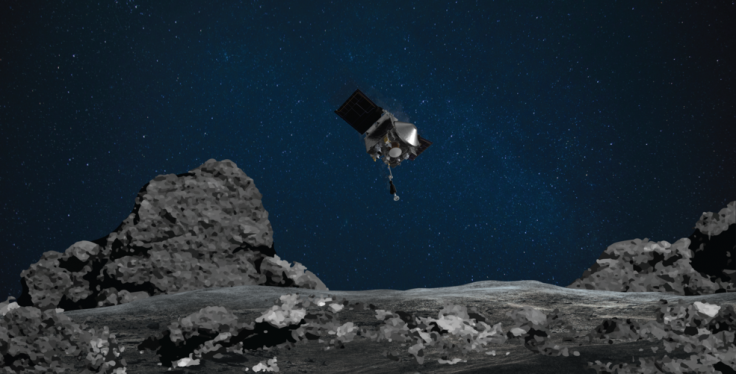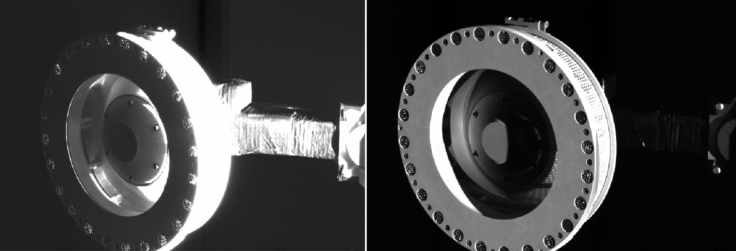The National Aeronautics and Space Administration's (NASA) spacecraft successfully completed the first-of-its-kind touch and go mission in the agency's history on an asteroid about 200 million miles (321 million kilometers) away from Earth. The spacecraft will collect rock and dust samples from the asteroid and bring them back to Earth.
The spacecraft, known as OSIRIS-REx short for Origins, Spectral Interpretation, Resource Identification, Security, Regolith Explorer, was launched from Cape Canaveral on September 8, 2016, atop an Atlas V rocket.
For the next two years, it made the journey to the asteroid named 101955 Bennu, arriving on December 3, 2018. Since then, OSIRIS-Rex had been orbiting the asteroid. After a four-hour descend, OSIRIS-Rex's Touch-and-Go Sample Acquisition Mechanism (TAGSAM) managed a 16-second touchdown on the space rock to collect samples. It is expected to return to Earth in 2023.

OSIRIS-Rex was designed to collect about 60 grams of samples from the site named Nightingale. However, there is no guarantee that it has been able to collect the sample in the first go. That's why it was designed with three nitrogen bottles for backup. That means, if it has failed in the first attempt, it can try again on backup sites.
"This was an incredible feat. Today, we've advanced both science and engineering and our prospects for future missions to study these mysterious ancient storytellers of the solar system," said Thomas Zurbuchen, associate administrator for NASA's Science Mission Directorate, adding that the primordial rock had been witness to the solar system's history.
What's Next?
Now, scientists will check if the spacecraft has managed to collect enough samples by analyzing images and mass measurement using the onboard cameras known as SamCam. If they are confident, then, the samples will be stowed on October 30.
To do that, scientists will send a command to OSIRIS-Rex's robotic arm which will put the sample collector head into the Sample Return Capsule (SRC). The robotic arm will then retract and close the SRC before beginning the return journey in March 2021 when "Bennu will be properly aligned with Earth for most fuel-efficient return."

Significance of Bennu
As thousands of asteroids cruise toward Earth, it raises the imminent question -- Why did NASA send a probe to a space rock 320 million miles away? There is a good reason for that. Bennu is not like other asteroids. Scientists believe Bennu predates even our Sun, making it over 4.5 billion years old space rock.
But it is not just a space rock. Gravity slowly forced a pile of space rubbles together to form the asteroid, which is the remnants of a collision. The 500-meter asteroid, scientists believe, would offer a glimpse into the solar system's past as other planets in the system have been created the same way. NASA also believes the asteroid is carbon-rich that became building blocks of life millions of years later. It could also contain water and minerals.
Previous Japan Missions
However, this is not the first time an agency has sent a spacecraft to collect samples from an asteroid. Back in 2003, Japan Aerospace Exploration Agency (JAXA) sent its Hayabusa spacecraft to 25143 Itokawa asteroid. It managed to collect more than 1500 regolith dust particles in 2005 and returned to Earth in 2010.
Another JAXA spacecraft Hayabusa-2 was launched in 2014 toward 162173 Ryugu which was of one-kilometer in diameter. It fired a special copper bullet and retrieved some of the ejected samples in 2019. It is on its way back to Earth and is expected to touch down in December 2020.









